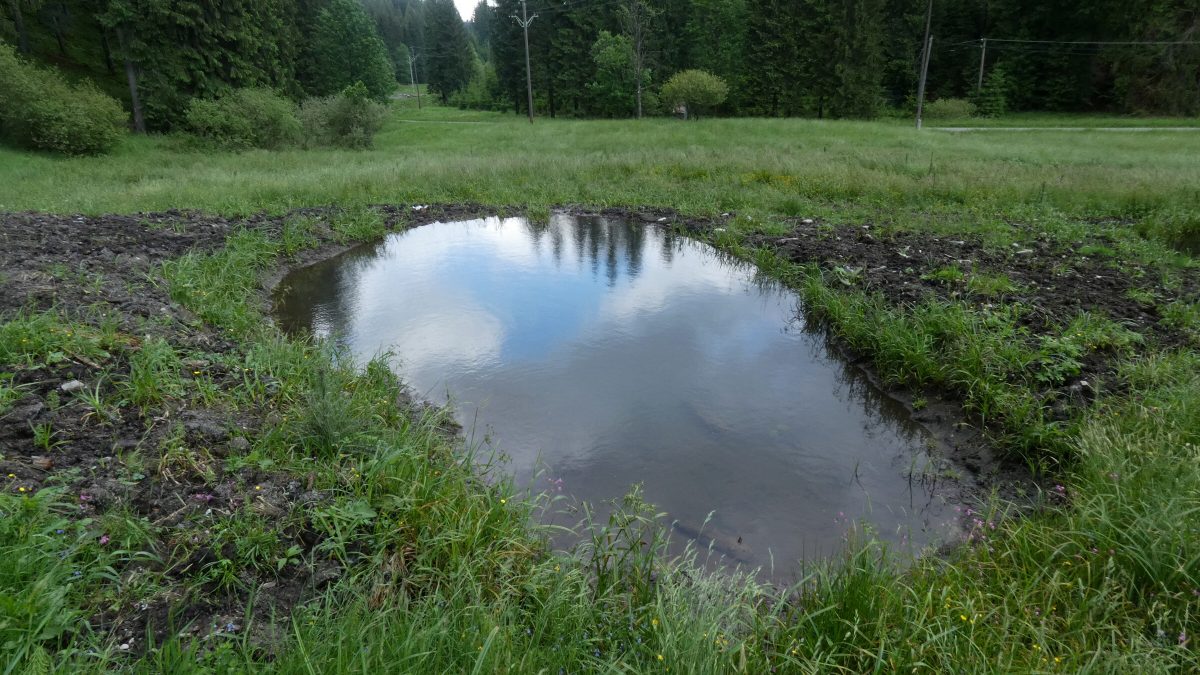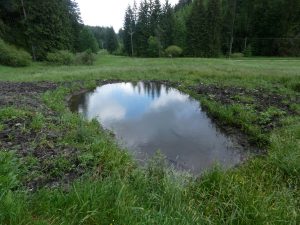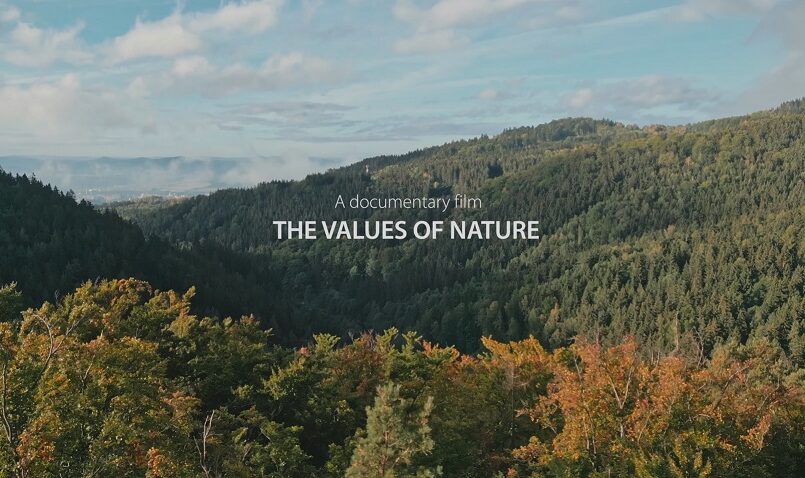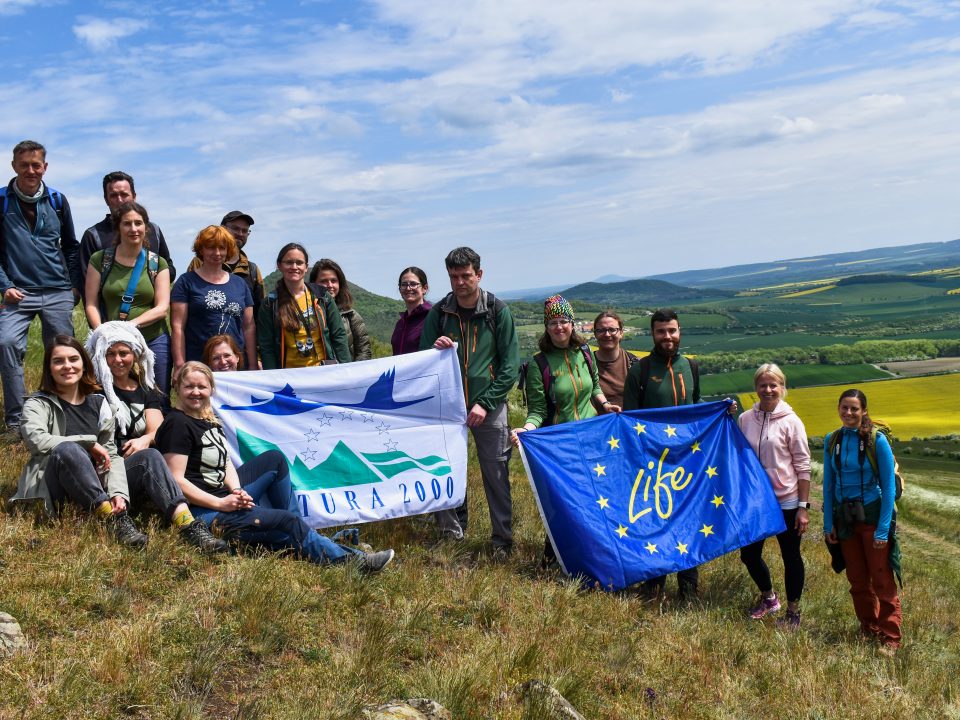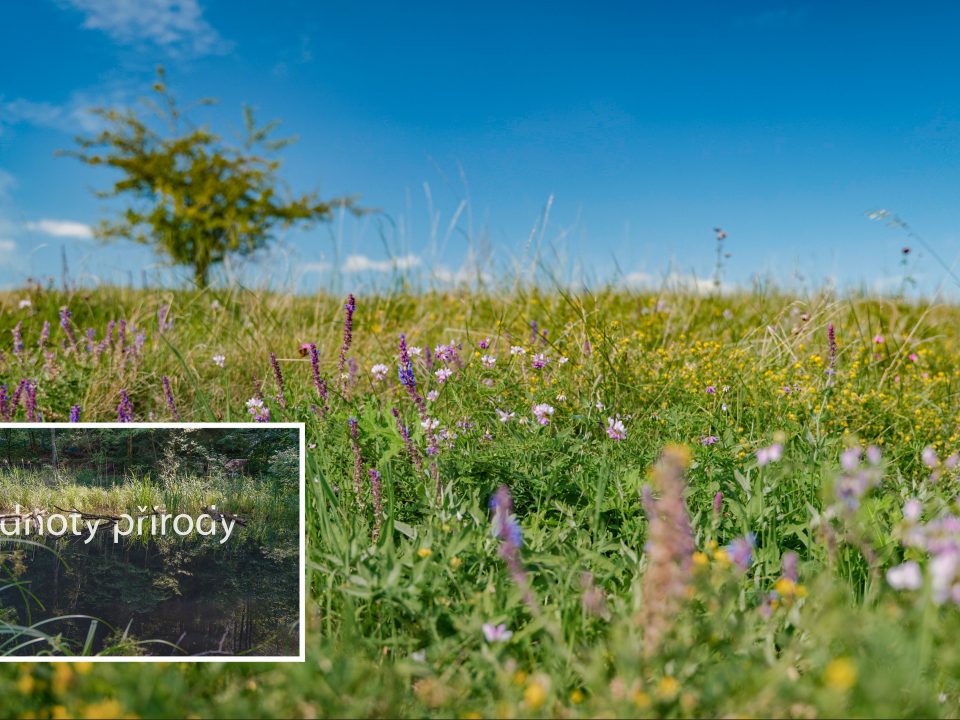Natural pools return water to the landscape and help fight drought
They are an integral part of Czech nature and thanks to them, every place comes alive as they become home to amphibians and other species, and thus help not only to retain water in the region and cool the place but also to increase biodiversity. Pools are being built gradually in various parts of the Czech Republic, thanks to private initiatives of individual farmers and also to the One Nature project.
The natural pools, usually fully sunk below ground level, do not have a dam or other technical devices (outlet, safety spillway). The water flows from them naturally, in a nature-friendly way. It is not used for fish or water fowl farming.
Naturally, they can be formed by transferring beds of unregulated watercourses, separating river meanders, at the site of uprooted trees, by animal activities (e.g. wallowing ground created by wild boars) or they can be natural terrain depressions filled with water from autumn or other heavy rains or in the spring after snow melting (see www.mokrady.wbs.cz in Czech only).
We distinguish different types of pools. The non-flow ones depend on precipitation or infiltration. The water level is the same as the surrounding groundwater level. In times of drought, the pool can dry out completely. On the other hand, periodically drying pools (suitable, for example, for Branchipus schaefferi or tadpole shrimp) retain water for less than four months a year, i.e. they often dry out. A flow-through pool, where the water drains regularly and it is necessary to stabilize the water level in a nature-friendly way, is permanently supplied by water from a surface inflow, from a spring, from drainage or a subsurface source.
Construction, restoration and maintenance of pools
If it is necessary to build a new pool or restore the former one so that the restoration or support of entire communities of the given habitats is successful, different principles must be respected depending on the pool’s size, intended shape, depth, the profile or slope of the banks and the bottom or, for example, the method of reinforcement, together with a number of other criteria.
In general, a near-natural shape is always preferred. You can also find pools in regular geometric shapes (rectangle, trapezoid or circle), which transform into a natural shape as a result of natural forces later. For larger pools, it is possible to build an island with vegetation which ensures protected nesting of birds. The pool should always provide a variability of its environment, i.e. both the shallow parts where water warms up quickly and the deeper parts.
The depth of the pool is determined mainly by the requirements for the animal or plant species for which it is being built or restored. The average depth of the pool varies from 0.8 to 1.0 m and the maximum depth is 1.5 m. For example, species such as the Carpathian newt or the alpine newt or the yellow-bellied toad prefer shallow pools up to 0.4 m deep.
Further management of the tools is needed. It includes, for example, partial sediment removal, cutting of self-seeding bushes and sensitive plucking of the overgrowth in order to increase sun exposure leading to water warming, faster development of amphibian larvae and reduction of leaf fall. All of the above actions contribute to prolonging the pool’s lifetime. The maintenance work should be done ideally once every five to ten years.
Further details on how to build pools in protected areas, such as the disposal of soil after digging the pool, are given in the Nature and Landscape Management Standards – Creation and Restoration of Pools (pdf, only in Czech), issued by the Nature Conservation Agency in cooperation with the Faculty of Civil Engineering of the Czech Technical University in Prague. Hydrobiologist Jaromír Maštera shares his valuable experience with building the pools in an interview for ekolist.cz: How to make a good pool? Make it shallow, advises Jaromír Maštera (only in Czech).
Examples of pools built thanks to the One Nature project
This year, we have built and restored pools in South Bohemia, in the Protected Landscape Areas of Žďárský vrch, Slavkovský les, Bílé Karpaty, Český les, Kokořínsko – Máchův kraj, Beskydy or in the Liberec region, for example:
- in Třeboňsko-střed SCI, the pools were restored especially for the flatleaf bladderwort and the European fire-bellied toad;
- in the Slavkovský les protected landscape area, pools were restored in the Krásenské rašeliniště SCI to support active raised bogs, in the Upolínová Louka – Křížky SCI for transition mires and quaking bogs and in the Močál u Bystřiny SCI for hard oligo-mesotrophic waters with benthic vegetation of Chara spp.;
- in the Bílé Karpaty SCI, pools were built to support beech wood, oak- hornbeam groves, forests on slopes, in screes and ravines, as well as in natural mixed ash-alder floodplain forests;
- in the Jestřebsko-Dokesko SCI, the pools were built for the large white-faced darter and in order to support natural eutrophic water reservoirs;
- in the Beskydy SCI, the newly built pools will become home especially to the yellow-bellied toad and Carpathian newt;
- in the Čerchovský les SCI, the renewed pool will serve mainly to the smooth newt and alpine newt;
- in the Jizerské smrčiny SCI, pools are renewed due to the support of active raised bogs.




